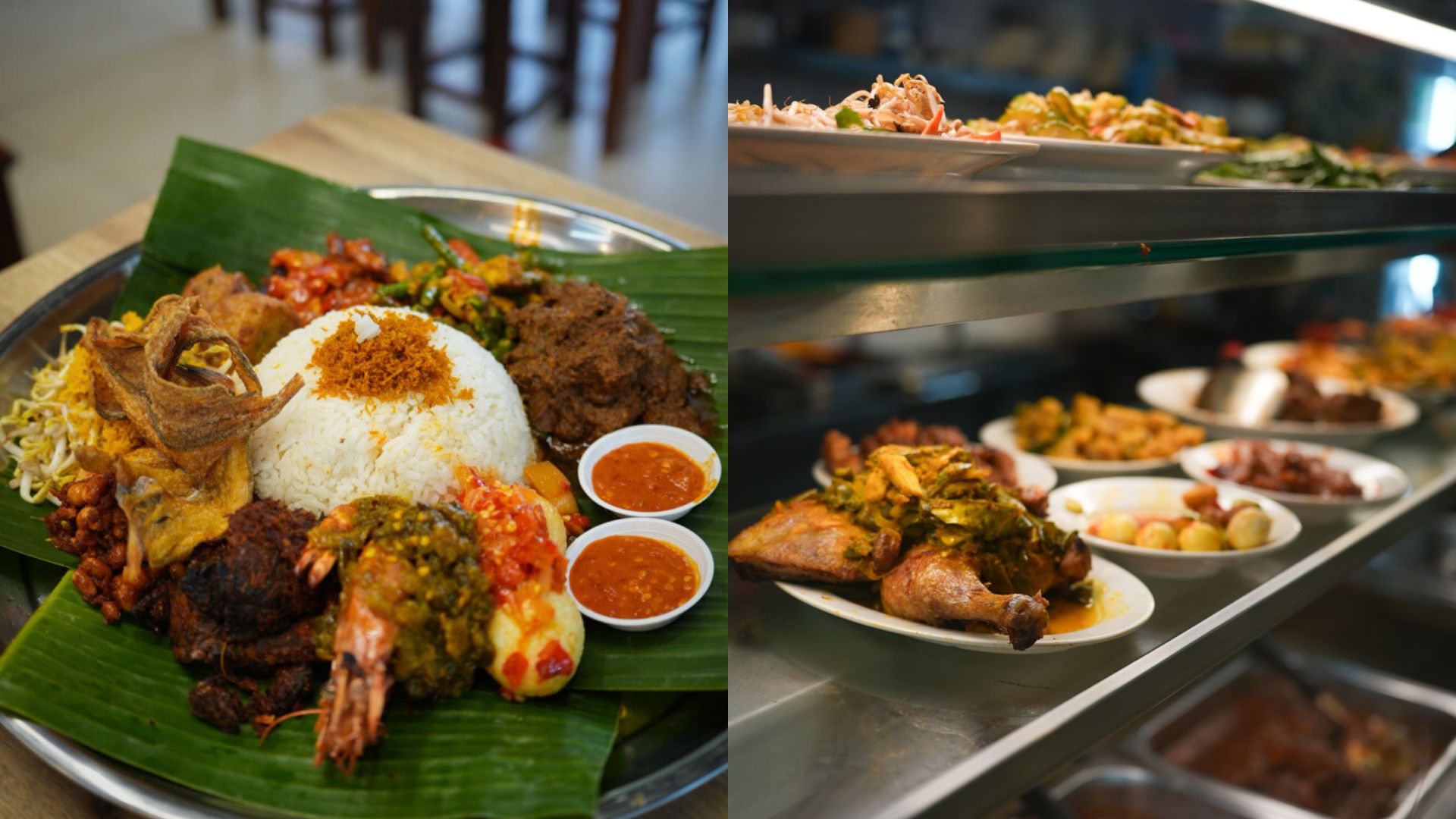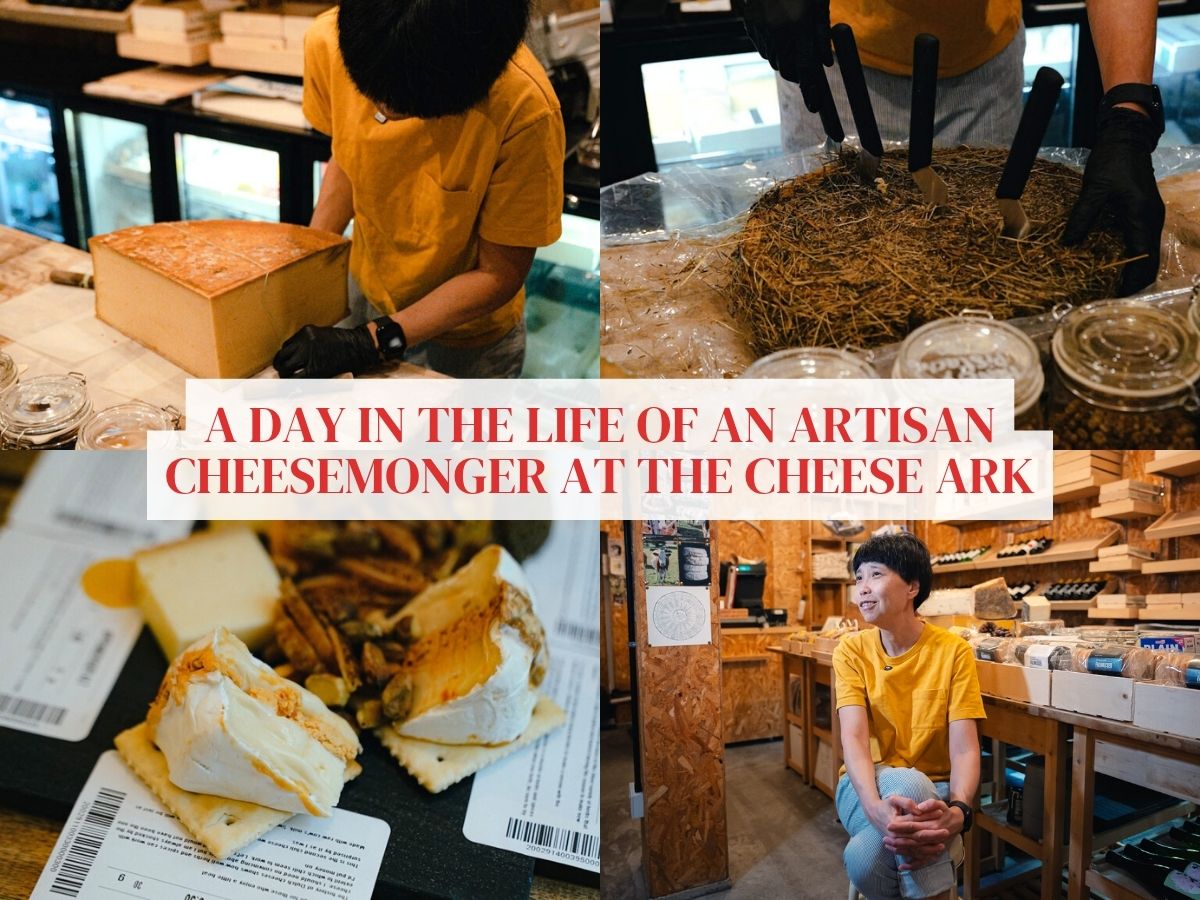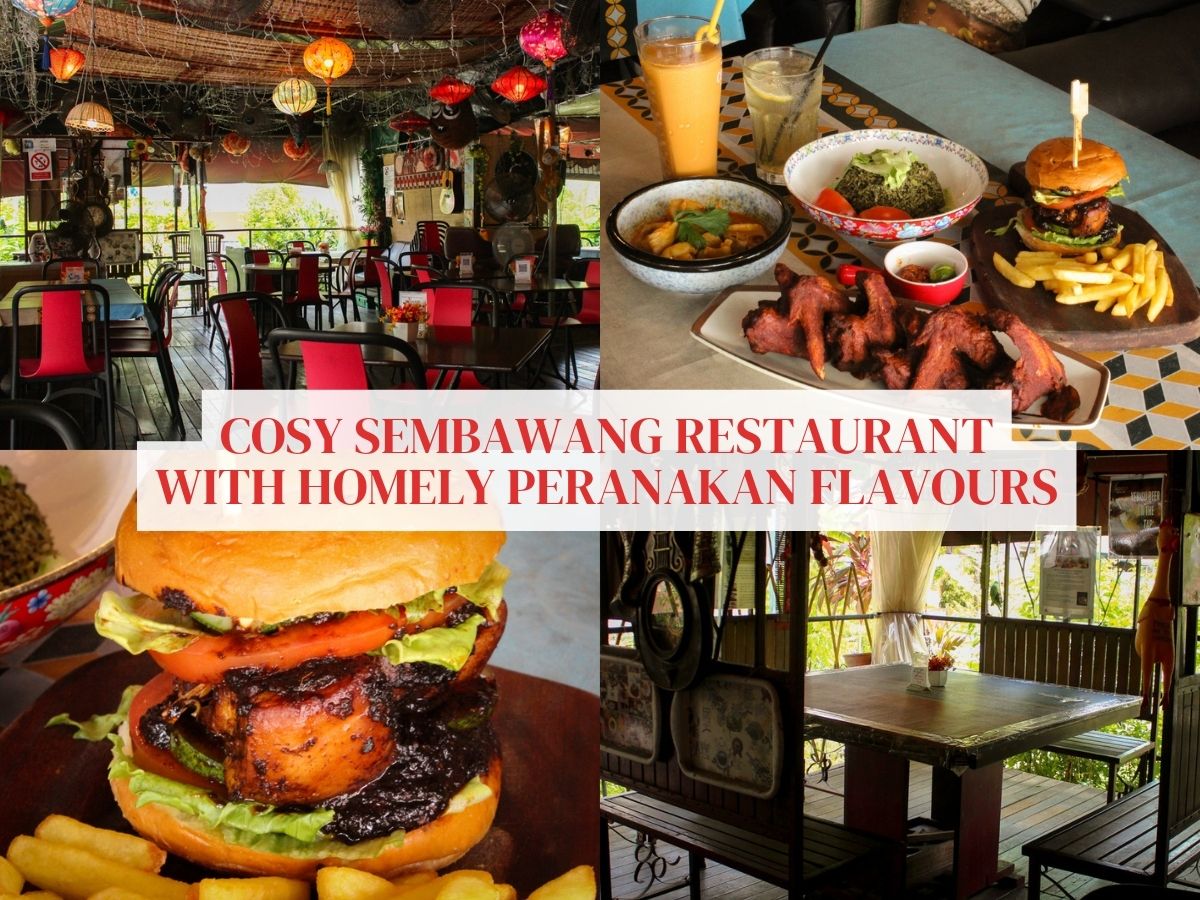We try the popular Coba Coba nasi ambeng at Yishun
If you hang around Yishun, you might’ve heard of Coba Coba — a well-loved spot known for its nasi ambeng and nasi padang. If not, consider this your cue to make the trip for some good and honest Malay-Indonesian comfort food.
Opened in 2014, Coba Coba is run by Timothy Yun and his father, and has long built its name on hearty, home-style Indonesian fare.
Its first outlet in Yishun has grown into a neighbourhood staple, and in 2021, it welcomed a second at Beatty Road.
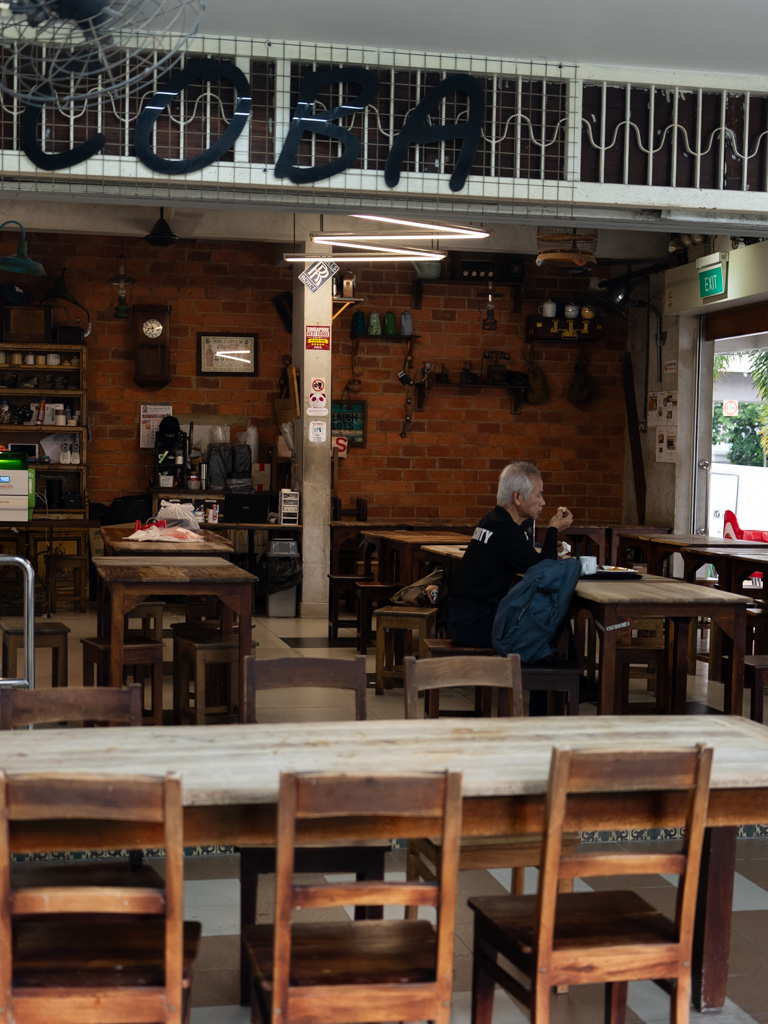
The name Coba Coba means to “try try” in Bahasa Indonesia — fitting for a place that invites you to sample a little bit of everything.
With its extensive menu, Coba Coba is made for communal dining. You can gather your friends for a generous sharing platter, or pick your favourites from the colourful array of dishes displayed behind the glass counter.
Nasi ambeng versus nasi padang
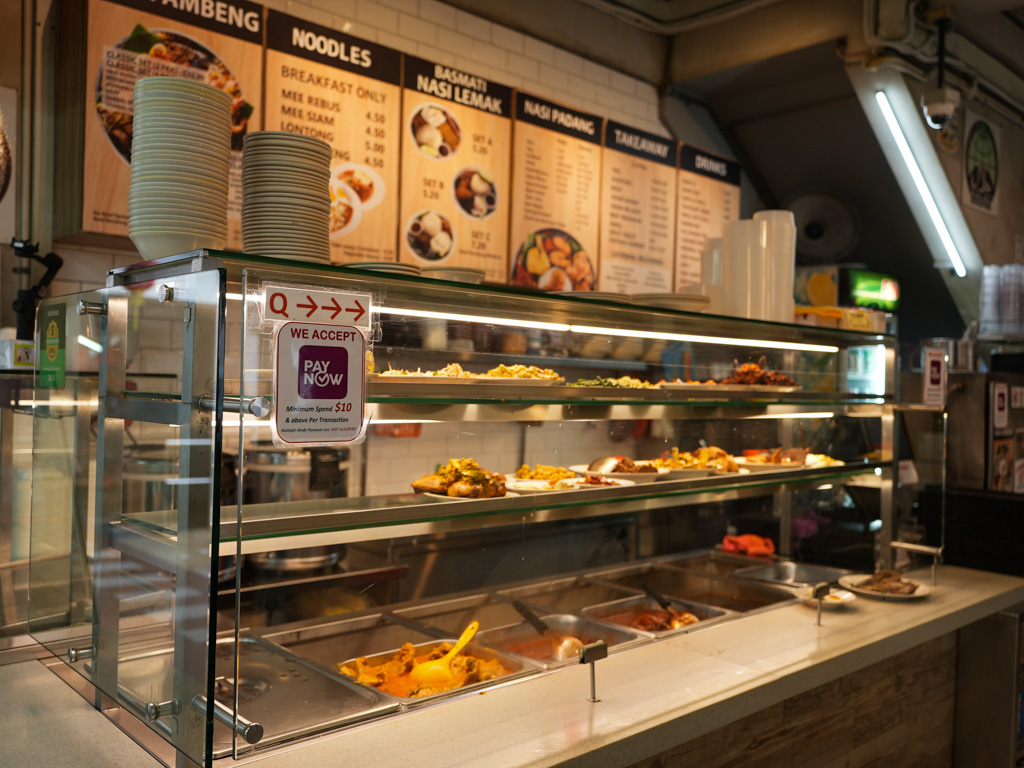
Both nasi ambeng and nasi padang are staples of Indonesian cuisine, each offering its own style of feasting.
Nasi ambeng hails from Java, typically served as a communal platter, and is traditionally served on banana leaves — piled high with rice and a fixed assortment of dishes meant to be shared. It’s a celebratory spread, similar to the Filipino boodle fight.
Nasi padang, from West Sumatra’s Minangkabau region, is likely to be a bit more familiar to us — there’s a selection of individual dishes where you pick and choose what you want on your plate, much like you would at a cai fan stall.
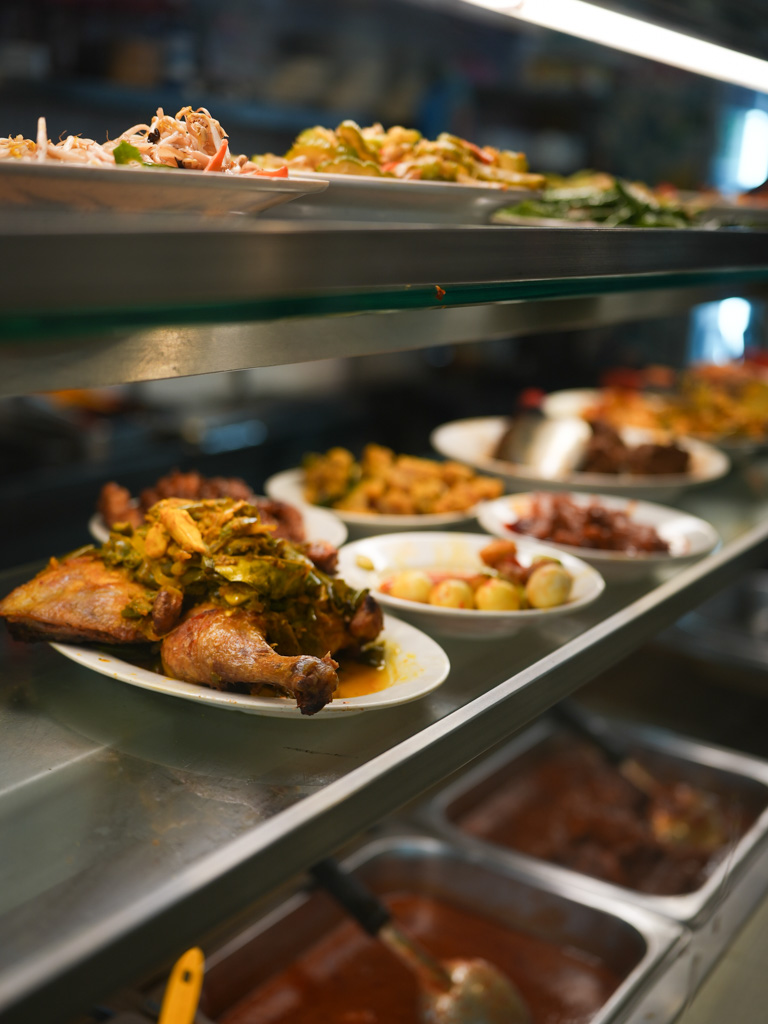
So whether you’re dining solo or with a crowd, there’s something for you — nasi padang for the indecisive, or nasi ambeng for a communal feast.
During our visit, there were three of us — so our appetites were set on the latter.
Nasi ambeng deluxe
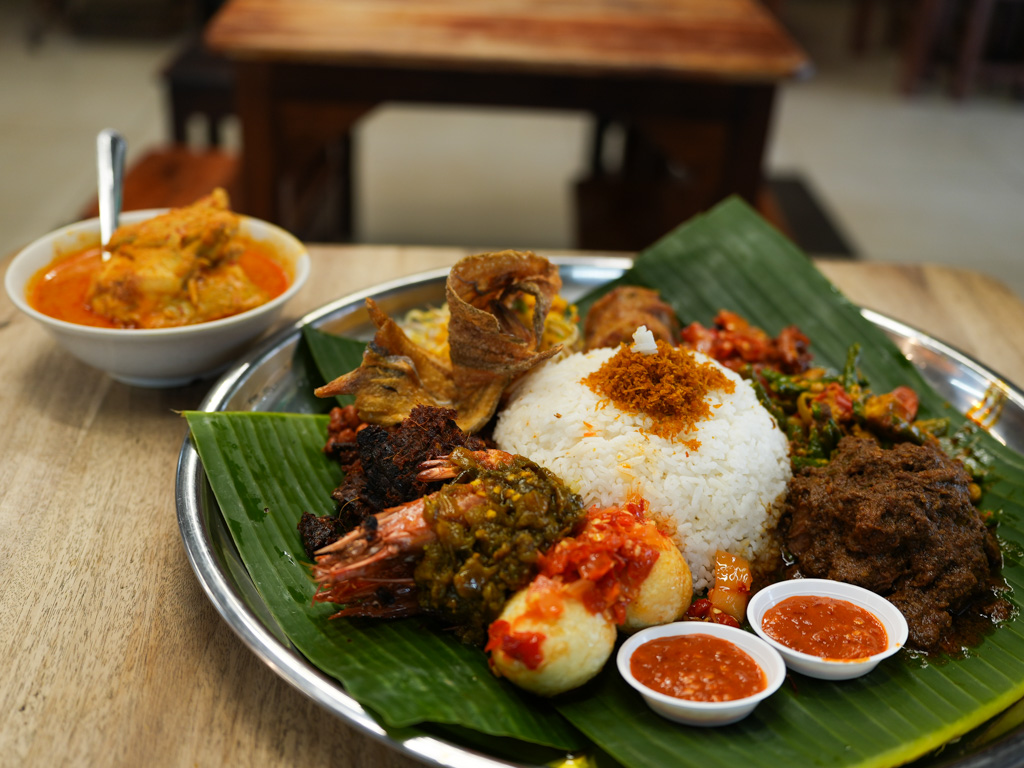
The nasi ambeng deluxe set for two people (S$43.90) arrives as an impressively generous spread: Nasi putih, sambal sotong, beef rendang, ayam kalio, serunding, sambal terung, begedil, udang balado hijau, telur belado (chilli hard boiled eggs), ikan kering, sambal goreng, paru, urap (vegetable salad with coconut dressing), sambal ikan kacang (sambal with ikan bilis) and sambal gila.
And it truly lives up to its name — deluxe, indeed.
To start, the mound of nasi putih (white rice) is fragrant and fluffy, and comes topped with serunding — a toasted coconut floss fried with turmeric, chilli, and garlic — adding a nutty, aromatic flavour to the rice.
The sambal gila (“crazy” sambal), too, lives up to the name — there’s a good, bold and fiery kick, which goes so well with the rice and the dishes.
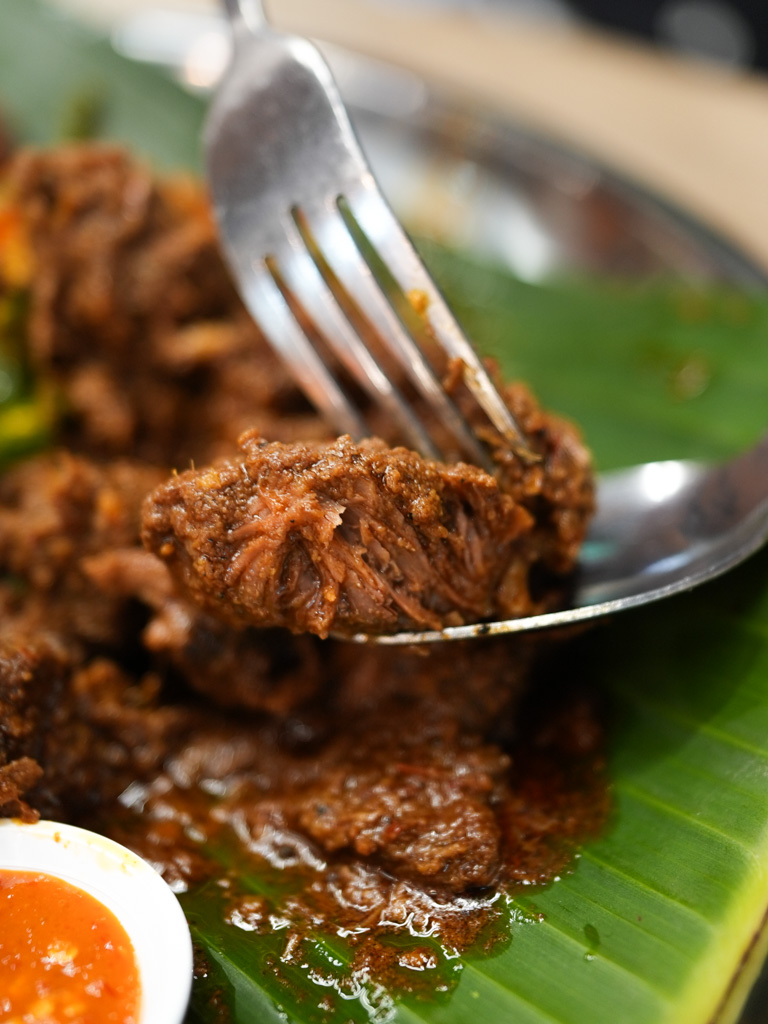
My personal favourite is the classic beef rendang, slow-cooked till the meat yields effortlessly to the fork. The coconut-rich gravy carries smoky notes of toasted spices.
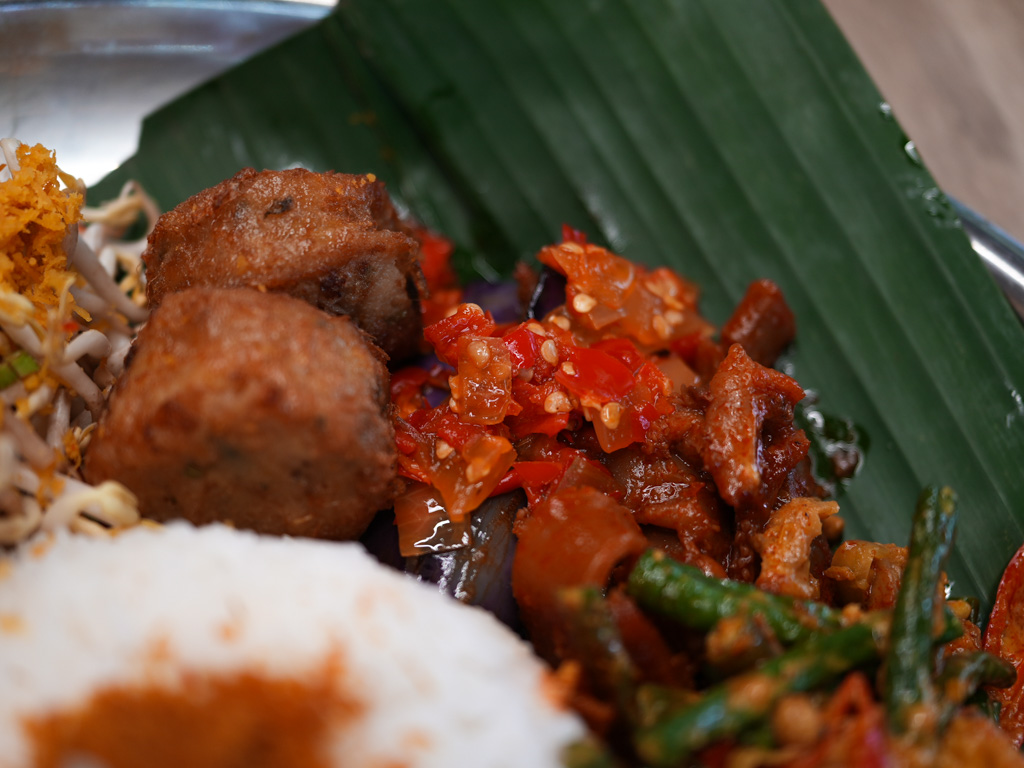
The sambal terung (eggplant) also stands out. The eggplant itself is perfectly soft, its flesh soaking up the sambal’s spicy-sweet depth.
It’s rich, spicy, and full of umami.
The begedil (fried potato patty) was another easy finish. My bias toward begedil aside, it is soft and pillowy within, with just enough seasoning and warmth to offset its spicier counterparts.
Though the exterior could’ve used a touch more crisp, it was still comforting in the right ways.
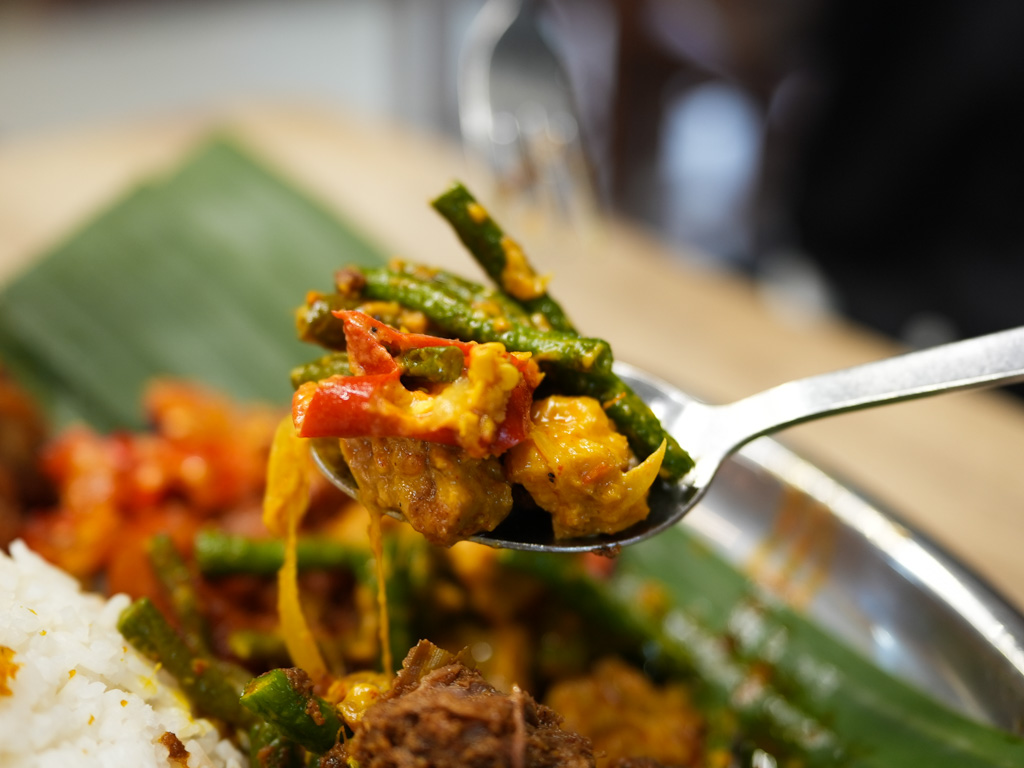
There’s also the sambal goreng — a stir-fry of tofu, tempeh, and long beans — bringing texture and spice that is laced with the sweetness of shallots and the aroma of belacan.
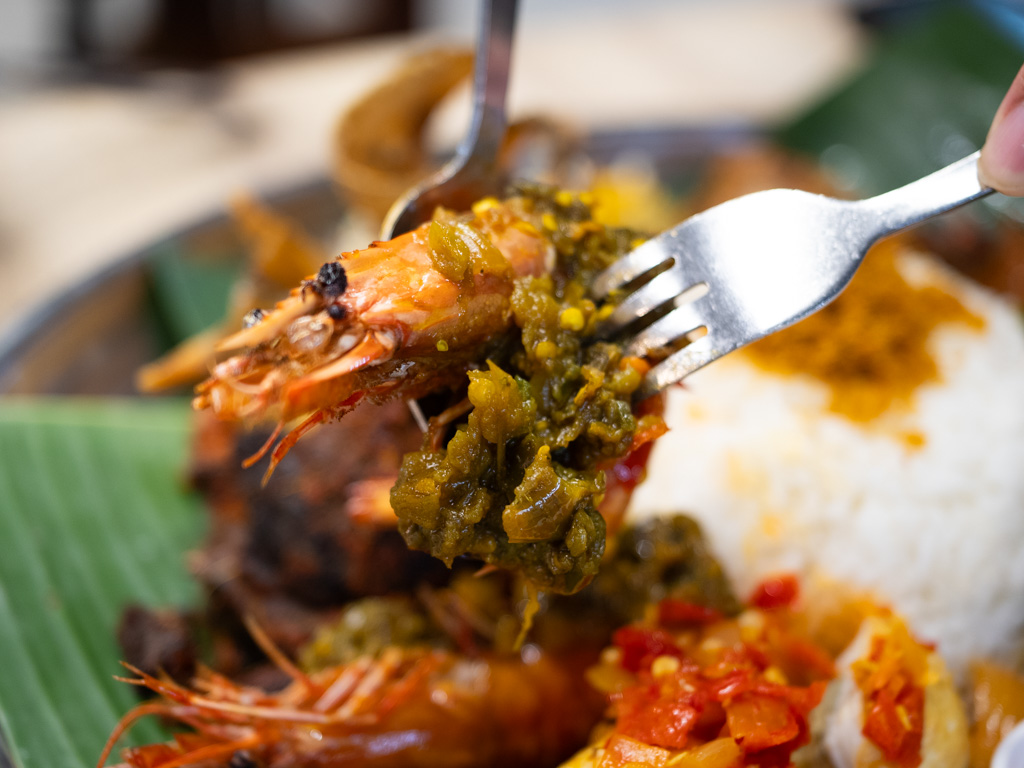
The udang balado hijau features prawns tossed in a green chilli sambal. The prawns were decent, not particularly memorable, but the green sambal carried the dish — its spice sharper and more tangy than the usual red, cutting through the richness of the platter.
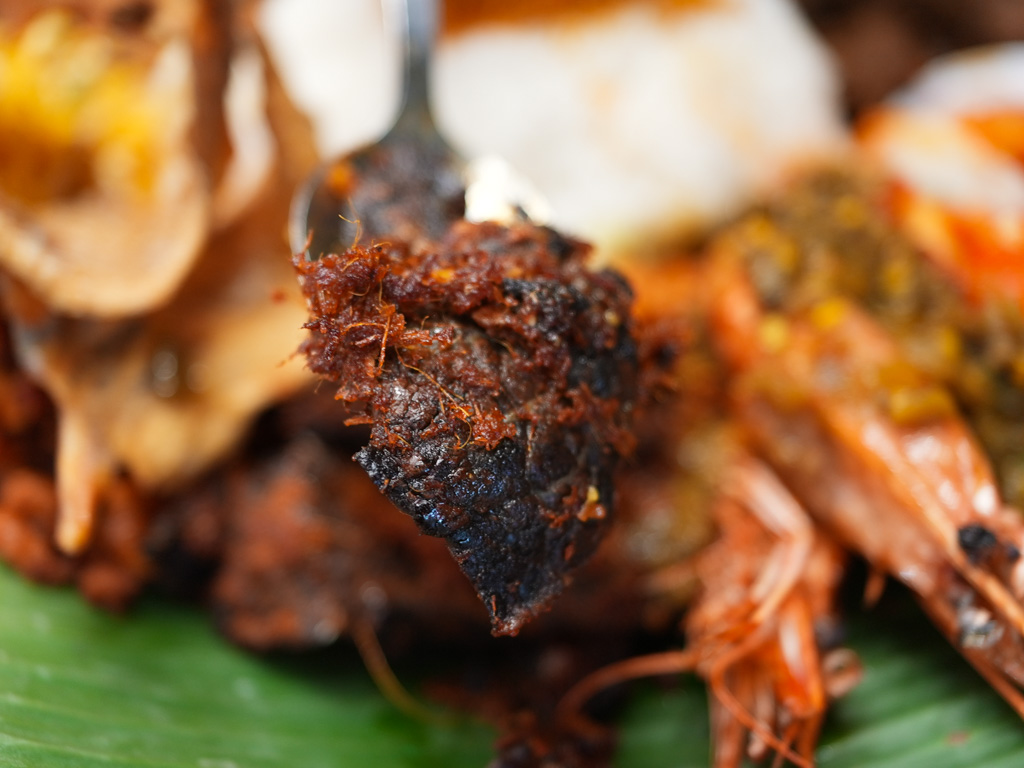
The paru (beef lungs) adds contrast to the platter — slightly chewy, with a distinct savoury depth that’s best eaten with rice and a dab of sambal.
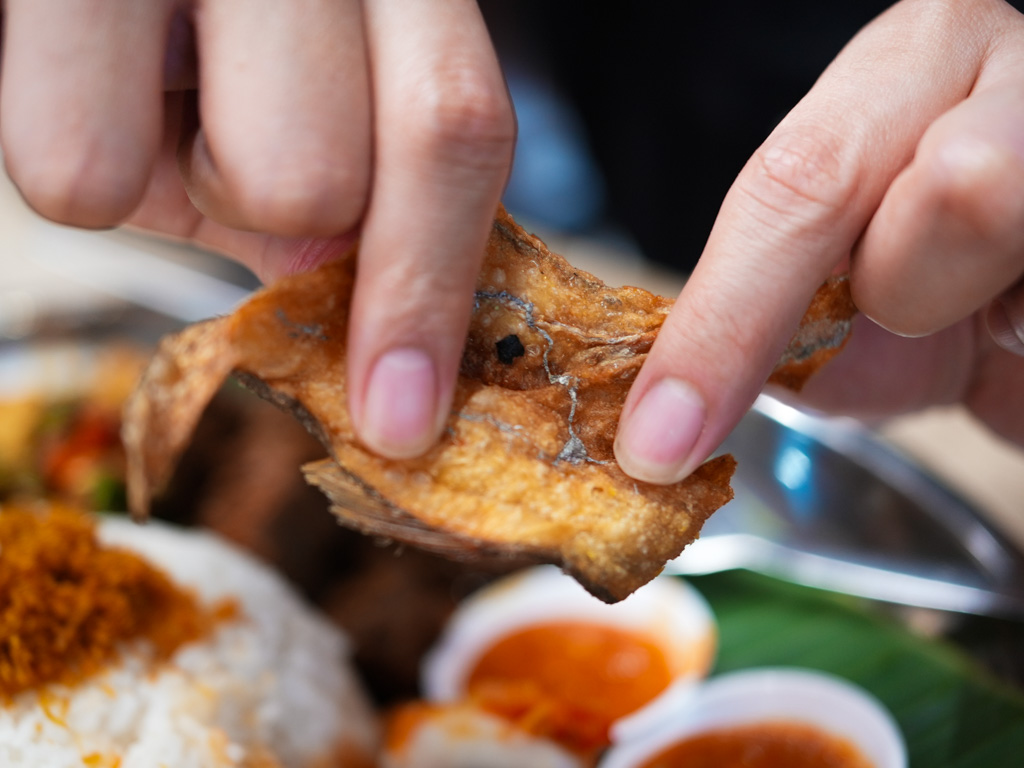
The ikan kering (dried fish) brings a pleasant crunch. The crisp and salty dried fish must be coated in the sambal’s rich, umami depth for that perfect bite.
Simple, addictive, and a great sidekick to the rice.
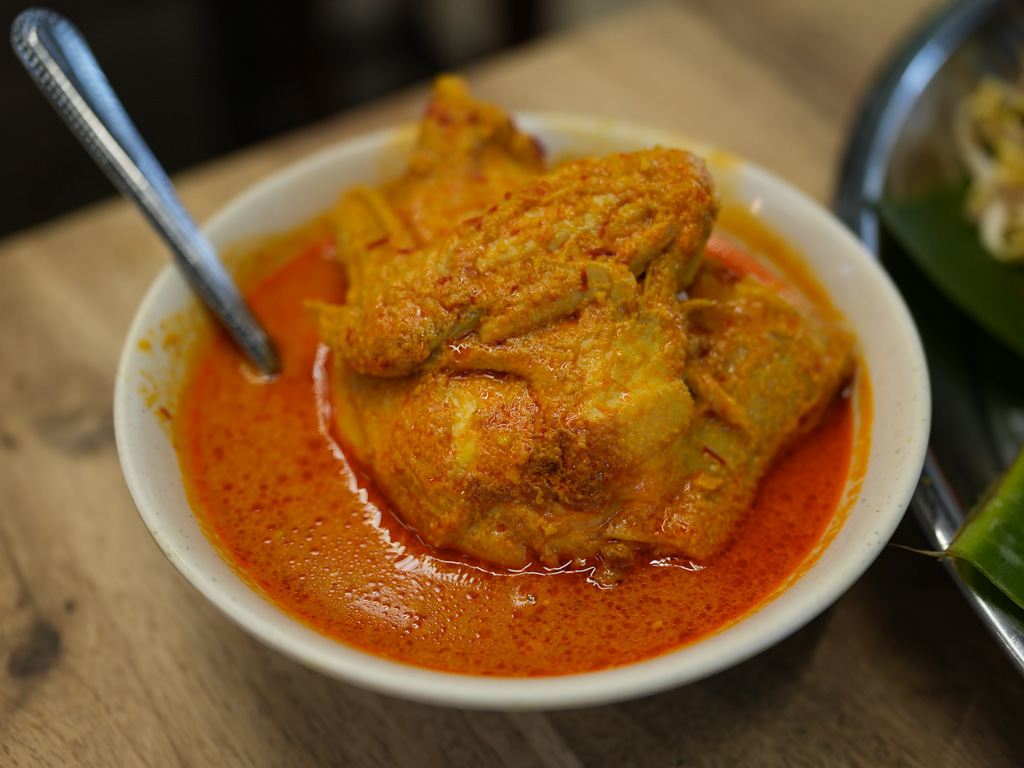
The ayam kalio stood out for its lighter profile — a turmeric-tinted coconut curry that is fragrant and gently spiced. The gravy had depth, without feeling too rich, something we appreciated, though the chicken leaned slightly on the tough side.
If you’re feeding a bigger group, the nasi ambeng deluxe set for four people (S$73.90) — with a bigger communal sharing platter — is designed to satisfy more stomachs.
If your table is looking for something lighter, get the nasi ambeng classic set for two (S$32.90) or nasi ambeng classic set for four (S$59.90), which includes fewer dishes (but still, plenty of flavour).
Whether you go for the nasi ambeng or nasi padang, Coba Coba delivers on a hearty, flavour-packed, and no-frills Indonesian meal that will fully satisfy your spice cravings.
For more ideas on what to eat, read on this other spot at Yishun, Warung Dimsum and the new Acai Teahouse serving unlimited toppings.
- 156 Yishun Street 11, 01-106
- 20 Beatty Road
Beatty Road: Wednesday to Monday (8am to 3pm)
- Yishun
- Bendemeer
